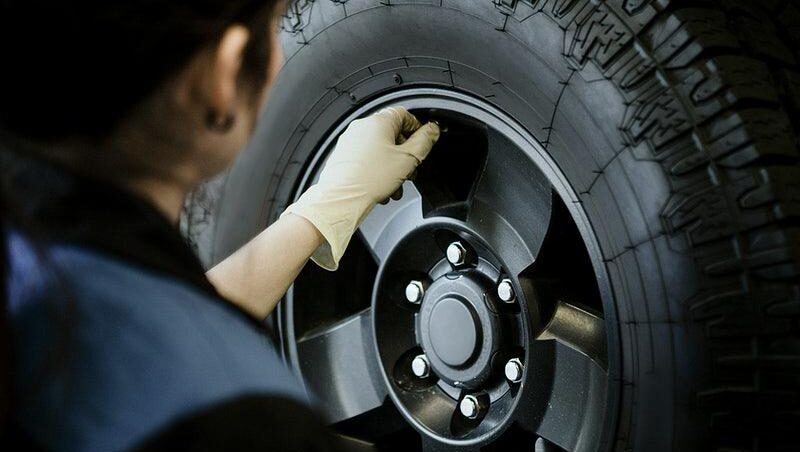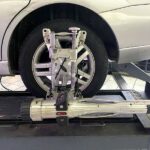As a car owner, it is important to know when your vehicle needs service, repairing, or tuning, and why. Due to the advancements in technologies, the vehicles we own today have certain features that help indicate if there is a minor or severe problem with the car. Identifying the problem makes it easier for us to pay close attention and solve it at the initial stage.
Many features make a car more durable and reliable when on the road. For instance, a vehicle’s tires play a huge role in enhancing its performance and providing a convenient and comfortable ride. Nowadays, tires can withstand different terrains without an issue. However, this doesn’t mean we should ignore them.
It is important to keep checking up on your tires to keep them in good shape. One of the most ignored practices is tire rotation. Today, we want to discuss what tire rotation is, why it is important, how often to rotate tires, and other common questions regarding rotating tires. Continue reading on as this will surely be helpful.
What Is Tire Rotation?
Tire rotation is a practice people implement on all vehicles, especially four-wheelers, including trucks, cars, and SUVs, to keep the tires safe. It involves rotating tires of a vehicle to even out tire the wear. This extends the life of your tires; thus, the tires will last longer, even on the most demanding terrains. However, rotating tires too often can also decrease their value.
Why Should You Rotate Your Tires?
Firstly, the tire rotation process extends your tires’ life span and ultimately saves you money. By rotating your tires, you can even out tire wear, which improves the vehicle’s handling. For instance, if you are driving down the road on a rainy day, flat or worn-out tires could result in difficulty with handling and may even lead to endangering your life and others around you.
Besides, the front tires of a vehicle have a different job than the ones in the rear. Whether the tires are responsible for turning, driving, braking, or only trailing, rotating tires or switching their positions can help distribute wear among all four tires.
Not focusing on tire rotation eventually results in shortening the tire’s life. By rotating your tires, you can also avoid problems such as tread cupping. This causes high noise levels and uncomfortable vibrations, which indicates an unusual wear pattern.
Tire rotation and tire pressure are, for no doubt, the two most important factors that affect the life of any tire. As you might now know this, but tires in different positions wear in different ways. Whether you’re driving, turning, or braking tires wear accordingly.
How to Rotate Tires?
You must be wondering about the tire rotation pattern and how to rotate tires. As we mentioned above, you have to swap the positions. This means that you move the front tires to the rear and the rear tires to the front.
Besides, you could also move the left tire to the right when replacing the rear tires with the front tires. However, rotation patterns and processes may differ, so you must always check and follow the pattern mention in the vehicle’s manual. Let us discuss the tire rotation pattern for different vehicles.
Front-Wheel Drive
Since the front tires do all the work in such vehicles, rotating them is always a good idea. To rotate the tires of front-wheel drive vehicles, you must move the front tires to the rear and vice versa. Keep in mind to also change sides while moving the rear to the front, which means shifting the right rear tire to the left front.
Rear-Wheel Drive
In these vehicles, the rear tires deliver the power, and the front does the steering. Therefore, both tires function together; however, the wearing patterns of both tires make it important to rotate them.
To do it the right way, all you have to do is the opposite of what you would do with a front-wheel drive. Move the rear tires to the opposite front corner and the front tires to the opposite rear position. It means you must move the left front to the right rear.
All-Wheel Drive
An all-wheel drive requires tire rotation as not all wheels are in action all the time. Moreover, the electronically controlled differentials in the vehicle can shift power between the rear and front.
The process of rotating an all-wheel drive vehicle’s tires is the same as the rear-wheel drive vehicle. You crisscross all four tires, moving the right front to the left rear and the left front to the right rear. Thus, the right rear will come to the left front and the left rear to the right front position.
How Does Tire Rotation Affect Tires?
An easy and simple explanation to this question is that since the front tires tend to wear out more quickly than the rear tires, swapping both positions of the tires results in a longer life span. This distributes the wear among the tires and creates balance.
However, if you do not rotate your tires, the wearing of the front tires could result in damaging them completely, and you may have to buy a new set of tires instead.
How Often Should You Rotate Your Tires?
The question of how often you should rotate your tires totally depends on the vehicle you are driving. The amount of pressure on a set of tires depends on whether your vehicle is a front-wheel drive or an all-wheel drive. No matter what vehicle you drive and how much you paid for it, the tires will wear out. The tires of a vehicle wear out depending on how much they are in use as well.
Therefore, if you want to extend the life of your wheels and save yourself from having to spend more money on purchasing a new set of tires, it is important to know when it is time to rotate your tires. According to mechanics and vehicle specialists, you should rotate your tires every 3000 to 5000 miles. Besides, you could even rotate them every time you go for an oil change.
You will find many tire installers who offer free tire rotation when you go for car maintenance. Hence, in some cases, tire rotation cost is minimal. If your car does not need oil change frequently, plan on rotating the tires every six months. For instance, when coming out of winter and entering into spring, you must inspect if your car needs an oil change and tire rotation.
Can You Do It At Home?
Yes, tire rotation is a safety check you can run at home. Now, whether you are planning on doing it yourself or hiring professionals to do it, the following factors are what you need to consider.
Proper Examination
You need to thoroughly examine all the tires and see whether there is any tread or sidewall damage. Don’t forget to check both the inner and outer sidewalls.
Date Code
Sure there are ways to improve your tires’ performance, but every tire manufacturers know that you can’t use tires continuously for more than five or ten years. Therefore, you must check the date code, as tires tend to deteriorate or wear over time, becoming unsafe for use.
If you are wondering how to determine the age of a tire, all you have to do is check the last four digits of the DOT code.
Torque Wrench
When it comes to tightening the lug nuts, make sure always to use a torque wrench. This will help in mounting the wheels on the vehicle in a proper manner. If you do not tighten the lug nuts properly, the tires could separate while driving, leading to a car accident.
Air Pressure
The front and rear tires require a specific amount of air pressure. Therefore, it is important that you check the air pressure of each tire and adjust it accordingly. When rotating the tires, make sure to use a good quality and reliable gauge to receive an accurate reading.
Conclusion
The process of tire rotation is quite simple and very important. No matter what vehicle you own, you must always examine its condition, and get an oil change, service, or rotate the tires every six months. Many people who spend a hefty amount on their vehicles tend to ignore the maintenance of tires and do not rotate them often.
Therefore, this results in severe problems to occur and more money spent on fixing the problem. Rotating tires is not a costly affair as you can do it yourself at home, and some mechanics even offer free tire rotation. It’s what your car needs to continue operating efficiently. So, next time you go to an auto repair shop for an oil change, get your car’s tire rotated. Visit BudgetMotorsReno.com and Blog.BudgetMotorsReno.com









